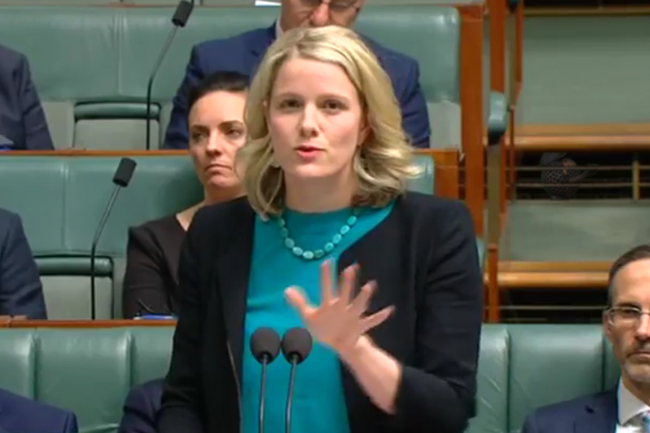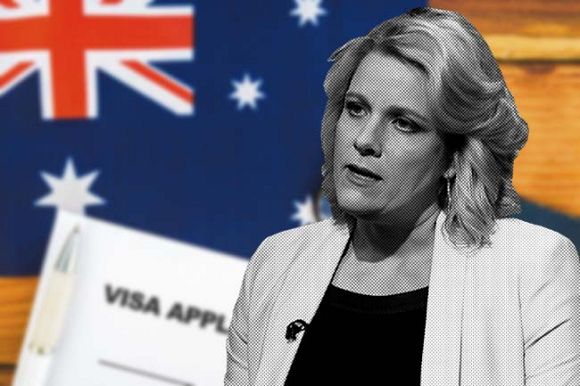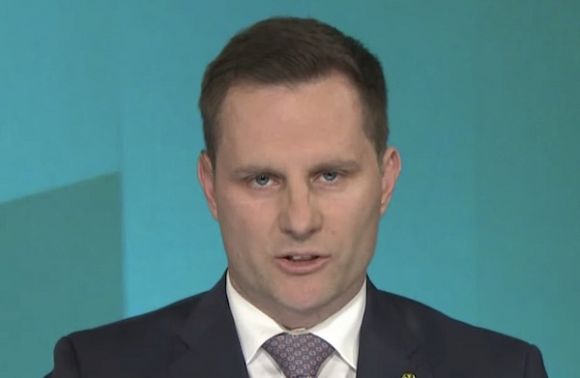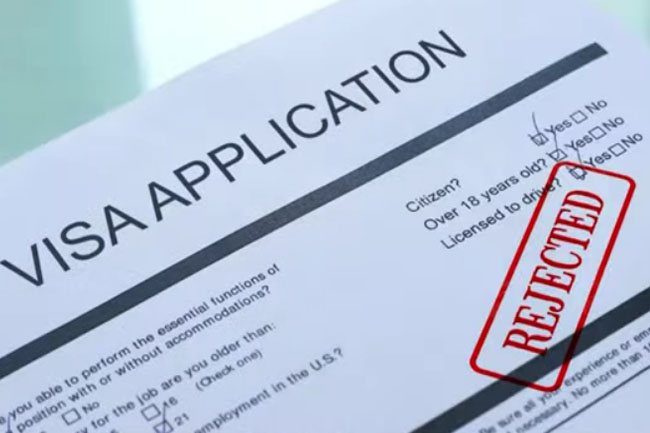Restoring integrity in our problematic visa system will be a difficult process, but a necessary one in order to win back the public's confidence. Dr Abul Rizvi reports.
OVER THE PAST few weeks, the Nine Network has reported on numerous examples of criminals abusing our visa system (see here and here).
No one should assume these cases represent a “few bad apples” — abuse in our visa system has steadily grown to an industrial scale since around 2014-15 as I describe here. According to the International Labour Organisation, labour trafficking is the second largest criminal enterprise on the planet — Australia is not immune from this.
But how could this come about under a Government and Department of Home Affairs (DHA) leadership that was reportedly obsessed with the integrity of our visa system and border protection? One possibility is that the DHA was so obsessed with boat arrivals that it took its eye off the ball.
Another explanation is that the Government came to view cancelling visas and removing relatively minor criminals after they had completed their custodial sentences in Australia as an indicator of visa integrity. While we have always cancelled visas of non-citizen criminals in Australia, the Government’s excessive focus on this, including for people who had lived most of their lives in Australia, became a distraction. Because it mainly affected New Zealand citizens, it only served to create unnecessary tensions in the bilateral relationship.
Why the Government and DHA took their eyes off the main game in terms of visa integrity is a question the people smuggling task force recently announced by DHA Secretary Mike Pezzullo at Senate Estimates may consider. Sadly, that task force will be reluctant to lay any blame for this situation at Pezzullo’s feet.
Or the issue may be considered by the review of visa integrity that Home Affairs Minister Clare O’Neil has referred to in media interviews. At this stage, there are no publicly available terms of reference for either of these. The review of visa integrity, if it proceeds, would need to operate in close cooperation with the broader migration system review that is currently underway. My early thoughts on that review are here.
If a review of visa integrity proceeds, what would it consider? What would be the key issues?
Any such review must at the outset get a handle on the size of the problem. While this has many dimensions, a starting point is to get an estimate of the number of people in Australia who no longer hold a visa and/or have been refused a substantive visa while in Australia and have not yet departed.
Unfortunately, DHA ceased publishing these estimates on data.gov.au, including estimates of source countries and visa types on initial entry, after June 2018. One possibility is that DHA does not want to publish this number because it has increased significantly following the surge in asylum applications from 2014-15. That surge was associated with the biggest labour trafficking scam in Australia’s history.
At end October 2022, DHA reported the number of asylum seekers who have been refused asylum and are still in the country is over 70,000. These people would mostly not have work rights and would have to work illegally to survive. With another 26,000 undecided asylum applications at the primary stage and new applications growing at 1,400 per month and rising, the 70,000 refused asylum seeker figure at end October will keep growing.
The number of unsuccessful asylum seekers who are removed voluntarily is around ten per month and the number removed involuntarily is around one per month.
Yet the number of people DHA reports as having been given a warning for working illegally has steadily declined from 424 in 2015-16 to 81 in 2020-22. The number of illegal workers located (but not issued a formal warning) has declined from 2,714 in 2014-15 to 292 in 2021-22. The number of employers warned about employing people without work rights has declined from 666 in 2014-15 to 81 in 2021-22. The number of employer awareness activities has declined from 1,346 in 2017-18 to 546 in 2021-22.
It is clear DHA has given up on enforcing key immigration laws. The problem has simply grown too big.

While the above chart suggests a general decline in compliance action, by constantly changing nomenclature and reducing the volume of compliance data it publishes on data.gov, DHA makes it very hard for any member of the public to get a handle on the current situation.
An independent review could get to the bottom of this as the basis for improving the integrity of the visa system. That would give the review guidance on the areas of immigration policy where visa integrity needs most urgent attention. A requirement for DHA to publish consistent data on the integrity of the visa system would also help.
One issue that would jump out at the review is labour trafficking abusing the asylum system. While monthly asylum applications fell to around 600 per month during the pandemic, they have returned to around 1,400 per month with a refusal rate of around 90% overall and significantly higher for asylum applications from major source nations such as Malaysia, China, India, Vietnam and now including Pacific Island nations such as Tonga, Vanuatu and Fiji.
The review would need to consider:
- what needs to be done to prevent the labour trafficking scam that started in 2014-15 from re-emerging to levels prior to the pandemic (around 2,500 asylum applications per month);
- investigation and prosecution of organisers (agents, lawyers and others) as well as the effectiveness of the Migration Agents Registration Authority (MARA);
- labour-hire companies and major employers associated with the scam;
- any internal corruption within DHA associated with the labour trafficking scam; and
- what is to be done for the victims of that scam who are now living in Australia with no rights — locating, detaining and removing them from Australia is no longer a viable option.
Significantly reducing the backlog of asylum applications and enabling faster processing of asylum applications at both the primary level and at the AAT must be a key objective. This should be done without undermining the asylum system for genuine refugees.
A second major method of undermining the integrity of the visa system is through student visas. Driven by former Immigration Minister Alex Hawke’s decision to grant students unlimited work rights, offshore student visa applications surged to new records in each of June, July, August, September and October of 2022 by very significant margins.
DHA has expressed concerns it is seeing a substantial level of fraud in the caseload and has also been refusing large numbers of student applicants using the “genuine temporary entrant” criteria. As a result, visa grant rates have fallen dramatically. Overall offshore student grant rates have fallen from between 85% to 95% in the period November 2021 to August 2022 to 65% in September 2022 and 62% in October 2022.
Such low grant rates are unsustainable. The visa integrity review should investigate which education agents and providers are most involved in student visa applications involving fraud and what should be done about this. The role of education quality regulators – the Australian Skills Quality Authority and the Tertiary Education Quality and Standards Agency – may need to be significantly strengthened as well as examining the effectiveness of student visa criteria.
In the two years before the pandemic and again in 2022, we have seen a major increase in people on visitor visas applying for further visas after arrival.
Part of the explanation for this is the increasing gridlock in the visa system led to many people deciding to get visitor visas to Australia and then apply for the visa they really wanted after arrival. These are likely to include partners (given the massive and unlawful partner backlog that developed from 2015) as well as workers who applied onshore for skilled temporary entry visas because the offshore process was so slow. There may also have been a large increase in visitors applying for onshore parent visas and for student visas due to the high offshore student visa refusal rate.
That development coincided with a rapid increase in the number of people in Australia on bridging visas which increased from 60,795 at the start of 2015 to 202,916 by end March 2019. The number of people on bridging visas increased again to 359,981 by end March 2021. The second surge in bridging visa holders may have been associated with temporary entrants in Australia seeking to extend their stay during the pandemic. An efficient visa system operating with high levels of integrity should never have more than 50,000 people on bridging visas.
Immigration authorities around the world know that a large number of visitors applying for other visas after arrival reflects a system working poorly and inefficiently. Such a situation makes the visa system vulnerable to the unscrupulous. It is therefore worrying that from January 2022 to October 2022, there have been 305,940 more visitors arriving than departing.
The visa integrity review should look at why this is happening and the extent to which this is being engineered by unscrupulous agents/lawyers. Reducing the rate at which visitors are applying for onshore visas should be a key objective along with significantly reducing the bridging visa backlog.
The visa integrity review should also look into how well the Movement Alert List (MAL) is being managed. MAL is a core tool to prevent the entry of known criminals and those who would undermine Australia’s visa system. That DHA failed to prevent entry to Australia of a person convicted in the UK for two years gaol for sex trafficking suggests management of MAL has been given insufficient priority.
A stronger MAL should be a key outcome of the visa integrity review.
Finally, the visa integrity review should work with the migration system review to identify a set of key indicators of the health of the visa system that can be monitored by the DHA leadership, its ministers and the general public.
Restoring integrity to Australia’s visa system will cost a fortune and take many years. It will be politically fraught. But public confidence that the visa system is being managed with a high degree of integrity is essential.
Dr Abul Rizvi is an Independent Australia columnist and a former Deputy Secretary of the Department of Immigration. You can follow Abul on Twitter @RizviAbul.
Related Articles
- Government issues biggest round of Skilled Independent visas in years
- Who are employers sponsoring from overseas?
- Albanese Government inundated with growing asylum applications
- Skilled Independent visa category set for rapid growth
- Dutton's negligence haunts 2022-23 Migration Program
 This work is licensed under a Creative Commons Attribution-NonCommercial-NoDerivs 3.0 Australia License
This work is licensed under a Creative Commons Attribution-NonCommercial-NoDerivs 3.0 Australia License
Support independent journalism Subscribe to IA.















